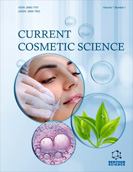Abstract
The proportion of the elderly in the population is increasing in many developed countries, and Japan has one of the oldest populations in the world. Therefore, health care for the elderly is becoming a serious issue in Japan. Skin health is a significant concern in maintaining the quality of life (QOL) in elderly people and those requiring long-term care. The skin deteriorates and becomes fragile in elderly individuals, and the accompanying increase in skin wrinkles is caused by the degradation of structural proteins in the dermis, collagen, and elastin fibers. In addition, skin aging occurs due to genetic factors and UV. Xerosis and dry skin are the primary skin problems in the elderly. Dry skin occurs frequently in elderly women, as sebaceous glands decrease with age, while the skin of elderly men tends to have a high lipid content. Skin wrinkles and blemishes increase with age. Inflammation frequently occurs in the dermis of the elderly person. Skin cancer is a serious threat to elderly people, and skin pH increases with age. Therefore, it is important to understand the health characteristics of elderly people to improve their QOL. The skin profiles of elderly people and those requiring long-term care have many associated problems. This situation is especially serious in Japan due to the ratio of elderly people showing an increasing trend. Elderly people requiring long-term care also experience skin problems caused by pressure ulcers and diapers. Microbial and fungal infections are also common in aged people. In this review, we have discussed the skin problems associated with aging and long-term care.
[http://dx.doi.org/10.1111/j.1365-2133.1975.tb05113.x] [PMID: 1220811]
[http://dx.doi.org/10.1016/j.det.2017.09.003] [PMID: 29108541]
[http://dx.doi.org/10.1046/j.1365-4362.2002.01425.x] [PMID: 12452997]
[http://dx.doi.org/10.2165/00128071-200910020-00001] [PMID: 19222248]
[http://dx.doi.org/10.1111/srt.12230] [PMID: 25801732]
[http://dx.doi.org/10.5107/sccj.27.355]
[http://dx.doi.org/10.1111/1523-1747.ep12532761] [PMID: 448177]
[http://dx.doi.org/10.1073/pnas.0405250101] [PMID: 15331785]
[http://dx.doi.org/10.1038/jidsymp.2009.5] [PMID: 19675545]
[http://dx.doi.org/10.1111/exd.13085] [PMID: 27539897]
[http://dx.doi.org/10.1038/nri3646] [PMID: 24722477]
[http://dx.doi.org/10.1093/qjmed/hcg002]
[http://dx.doi.org/10.1111/j.1468-2494.2009.00535.x] [PMID: 19889046]
[PMID: 18404866]
[http://dx.doi.org/10.1159/000337029] [PMID: 22433511]
[PMID: 2459871]
[http://dx.doi.org/10.1097/GOX.0000000000000045] [PMID: 25289288]
[http://dx.doi.org/10.1016/j.jaci.2013.12.1079] [PMID: 24655575]
[http://dx.doi.org/10.1016/j.jamda.2011.01.017] [PMID: 21450252]
[http://dx.doi.org/10.1001/jama.298.17.2020] [PMID: 17986695]
[http://dx.doi.org/10.1016/S0140-6736(11)61176-8] [PMID: 21885099]
[http://dx.doi.org/10.1590/S1983-14472011000100019] [PMID: 21888215]
[PMID: 1830985]
[PMID: 1862646]
[http://dx.doi.org/10.4103/0970-0358.155260] [PMID: 25991879]
[PMID: 12839352]
[http://dx.doi.org/10.1111/j.1742-481X.2012.01012.x]
[http://dx.doi.org/10.1186/s13104-017-2410-6] [PMID: 28153055]
[http://dx.doi.org/10.1067/mai.2000.106484] [PMID: 10808164]
[http://dx.doi.org/10.1067/mjd.2002.124617] [PMID: 12140465]
[http://dx.doi.org/10.3390/fermentation5020043]
[http://dx.doi.org/10.1097/NMC.0b013e31823850ea] [PMID: 22072018]
[http://dx.doi.org/10.1111/1744-1609.12019] [PMID: 23750575]
[http://dx.doi.org/10.1111/pde.12348] [PMID: 24890321]
[http://dx.doi.org/10.1111/j.1525-1470.2008.00725.x] [PMID: 18789081]
[http://dx.doi.org/10.4037/ccn1996.16.4.38] [PMID: 8852245]
[http://dx.doi.org/10.1111/jocn.14150] [PMID: 29156087]
[http://dx.doi.org/10.1002/gps.2232] [PMID: 19280680]








